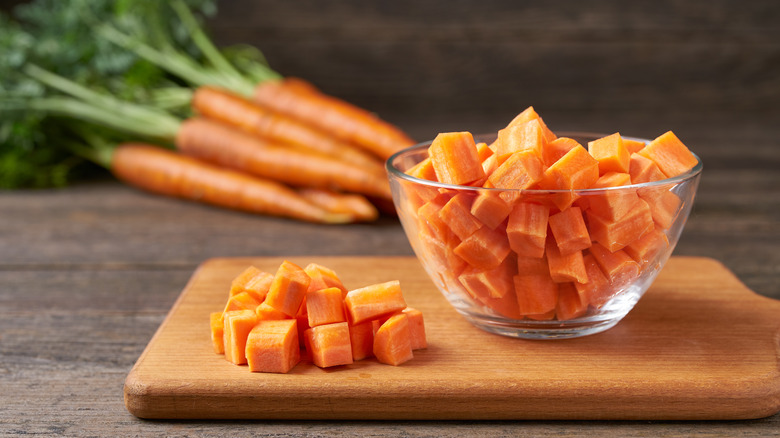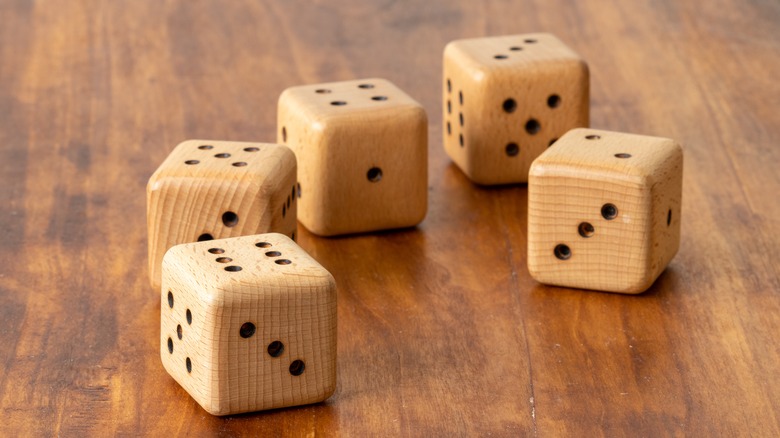How Large Your Pieces Should Be When Dicing
From julienne to batonnet, and brunoise to chiffonade, there are many different knife cuts up every chef's sleeve — and no shortage of fancy french words to accompany them (via Michelin Guide). But for those of us attempting the latest TikTok viral food trend, a dice cut is what we probably come across most often in recipes. If you're like many, you may just kind of skim over that instruction and take your knife to the onion, hoping you end up with something semi-presentable and small enough pieces to swallow.
Whatever approach you take with knife-meets-vegetable, there's a reason a dice cut is arguably the most popular of the bunch and, therefore, an essential skill for any home cook or aspiring Michelin-starred sous. Even if you are a Food Network fan and know the proper technique to get those perfectly uniform pieces, have you ever wondered why it's important and what purpose it serves?
Just like dice
A dice cut is technically one step beyond another cut — a baton or batonnet (think french fry shape). When those sticks are cut into smaller pieces, a perfect square results. Meseidy Rivera of The Pioneer Woman points out that a small dice is ¼ inch x ¼ inch — think mirepoix for a soup or onions in salsa. A medium dice is ½ inch x ½ inch and perfect for stews. A large dice is about ¾ inch x ¾ inch and is usually saved for roasting root vegetables such as potatoes. Unless otherwise specified, when a recipe calls for a dice, you'll probably want to aim for the small or medium measurements.
Why is this important? Well, other than aesthetics, the size of food comes into play when considering cook time. Imagine a sheet pan with a mix of large diced potatoes, medium diced carrots, and small diced onions. If you put that in the oven and set a timer for 30 minutes, you'll probably end up with some charred onions and nearly raw potato! Uniform size and shape typically equal comparable cook times (via Misen).

